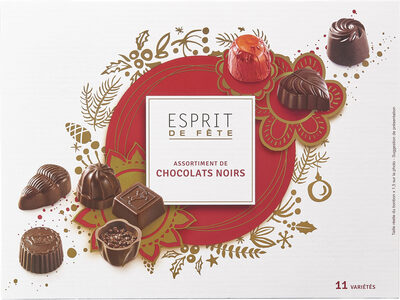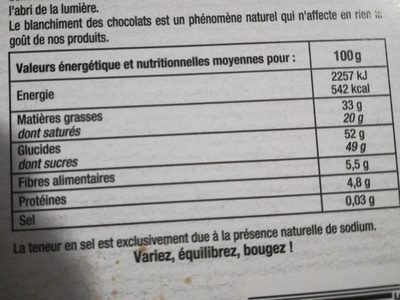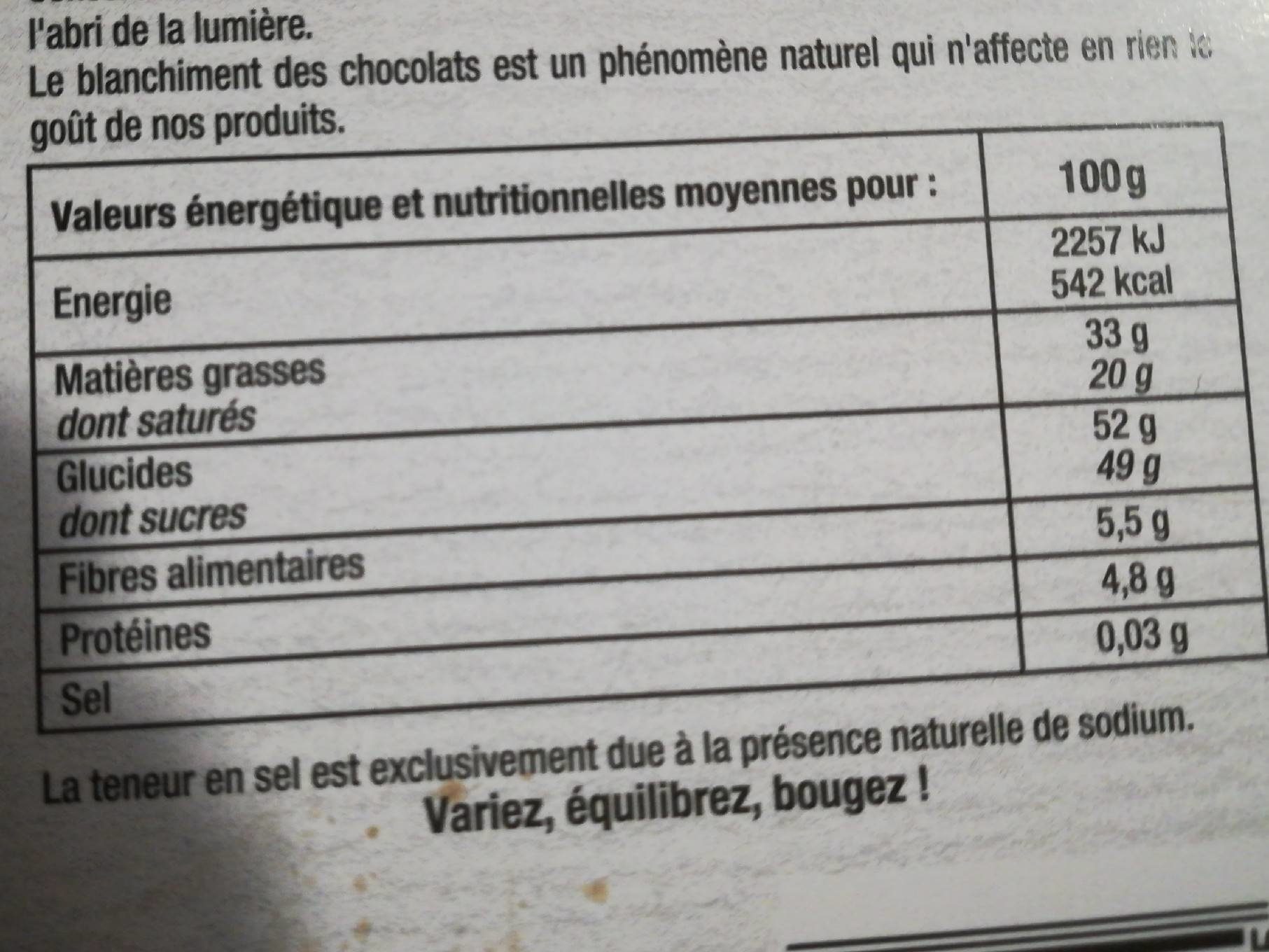Grande Collection - Esprit de Fête - 445 g
This product page is not complete. You can help to complete it by editing it and adding more data from the photos we have, or by taking more photos using the app for Android or iPhone/iPad. Thank you!
×
Some of the data for this product has been provided directly by the manufacturer Carrefour.
Barra-kodea: 3560070368495 (EAN / EAN-13)
Izen arrunta: Assortiment de 42 bonbons de chocolat noir.
Kopurua: 445 g
Markak: Esprit de Fête, Carrefour
Kategoriak: en:Snacks, en:Sweet snacks, en:Cocoa and its products, en:Confectioneries, en:Chocolate candies, en:Bonbons
Etiketak, ziurtagiriak, sariak: en:Made in France
Origin of the product and/or its ingredients: Origine : Ces bonbons de chocolat ont été fabriqués en France à partir d'ingrédients de diverses origines.
Producer: Fabriqué en France par EMB 59020 pour Interdis.
Manufacturing or processing places: France
Traceability code: EMB 59020 - Ascq (Nord, France)
Dendak: Carrefour
Matching with your preferences
Ingurumena
Ontziratzea
Transportation
Threatened species
Other information
Other information: POIRE Bonbon de chocolat noir fourrage à l'eau de vie de Poire Williams (9,1%) FRAMBOISE Bonbon de chocolat noir fourrage à l'eau de vie de framboise (9,8%) POCHE NOIR Bonbon de chocolat fourrage truffe (50%) GRIOTTE Bonbon de chocolat noir fourrage à la cerise à l'alcool (12%) et au spiritueux au kirsch (3,1%) CABRIOLE NOIR Bonbon de chocolat noir fourrage truffe et éclats de fèves de cacao caramélisés (1,3%) MANAOS Bonbon de chocolat noir fourrage au café (2,7%) et inclusions croustillantes (1,6%) au café (0,1%) COROLLE Bonbon de chocolat noir fourrage cacaoté avec éclats de fèves de cacao caramélisés (2,7%) NYMPHÉAS NOIR Bonbon de chocolat noir fourrage au praliné (4%) COQUILLAGE NOIR Bonbon de chocolat noir fourrage au praliné (32%) PALET Bonbon de chocolat noir fourrage truffe fantaisie (52%) ROYAL NOIR Bonbon de chocolat noir fourrage au praliné (3,6%) et éclats de noisettes caramélisés (2,9%) FABRIQUÉ EN FRANCE 11 variétés 42 chocolats
Conservation conditions: Conservation : À conserver dans un endroit propre, sec, tempéré et sans odeur, à l'abri de la lumière. Le blanchiment des chocolats est un phénomène naturel qui n'affecte en rien le goût de nos produits.
Customer service: Service consommateurs Esprit de Fête - Interdis TSA 91431 - 91343 MASSY CEDEX
Report a problem
Datuen iturria
Product added on by kiliweb
Last edit of product page on by org-carrefour.
Produktuaren orria -gatik editatua beniben, carrefour, openfoodfacts-contributors, quechoisir, roboto-app, yuka.UTU4OUdyOGI5dG9vaC9Bcy9oWHQyZXhTNDZDMlhYdUlKdFlBSVE9PQ.










